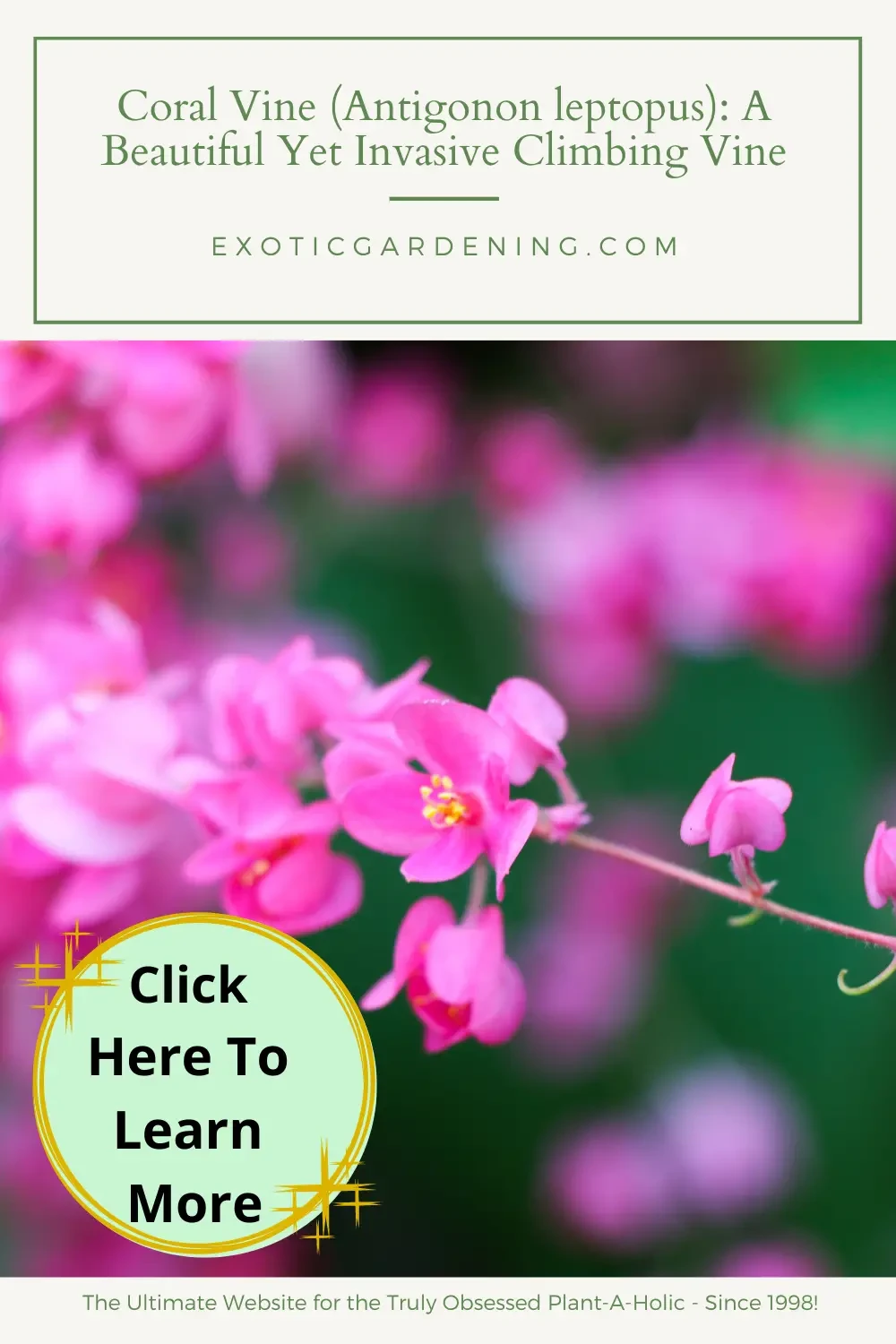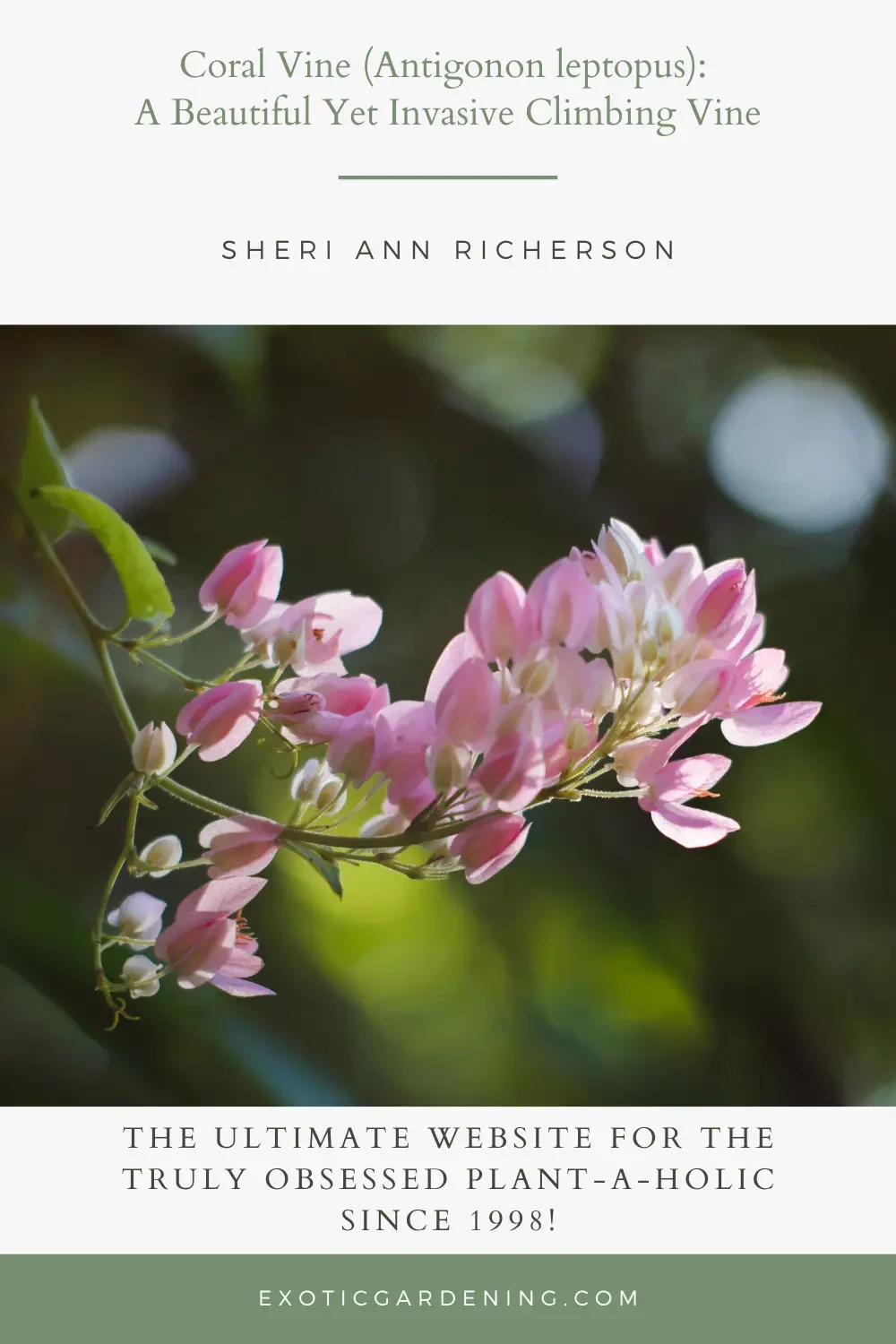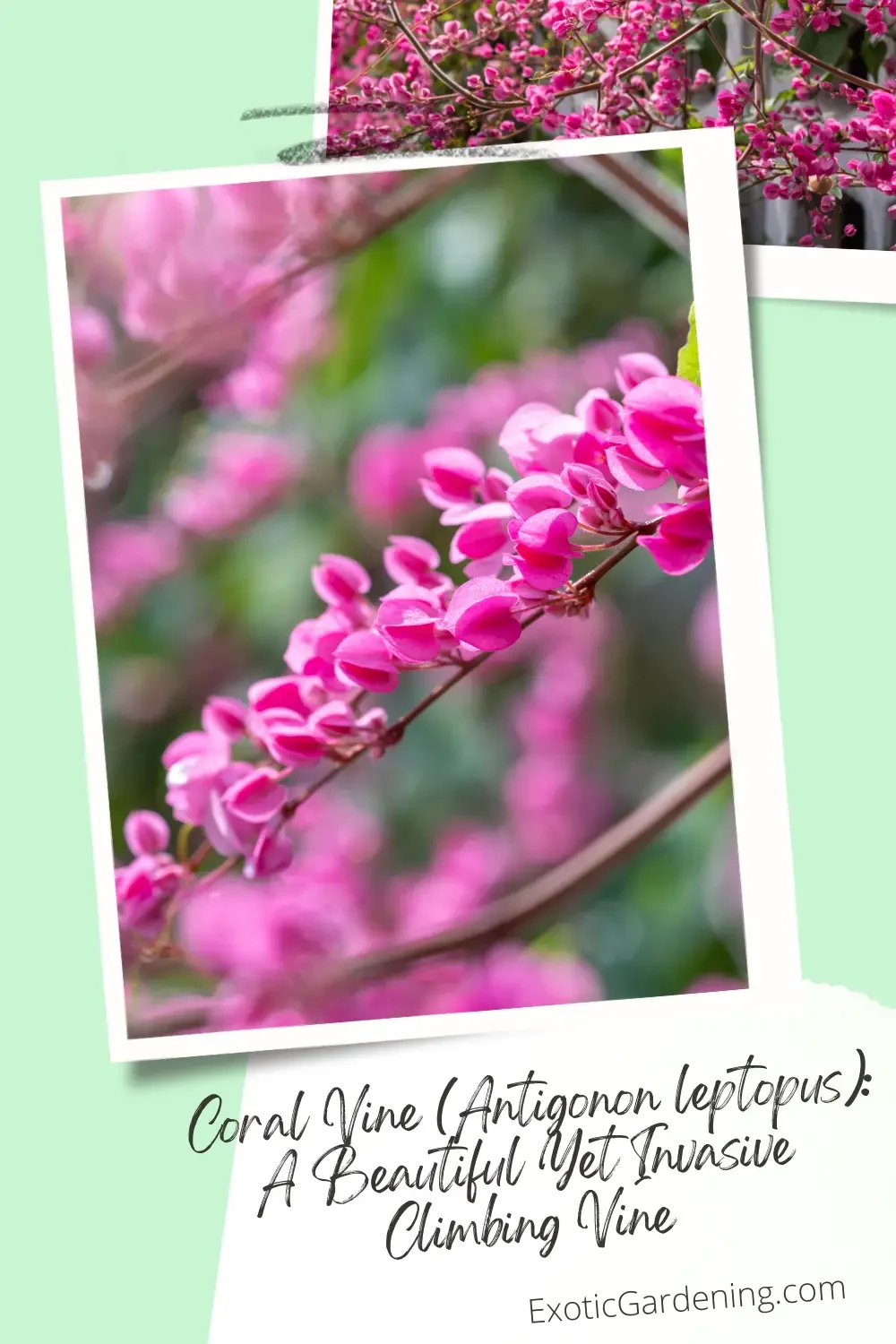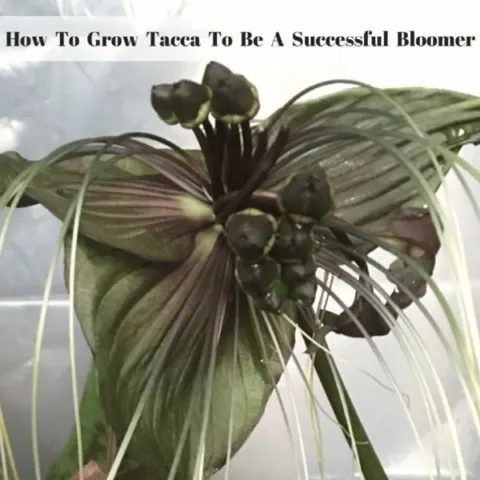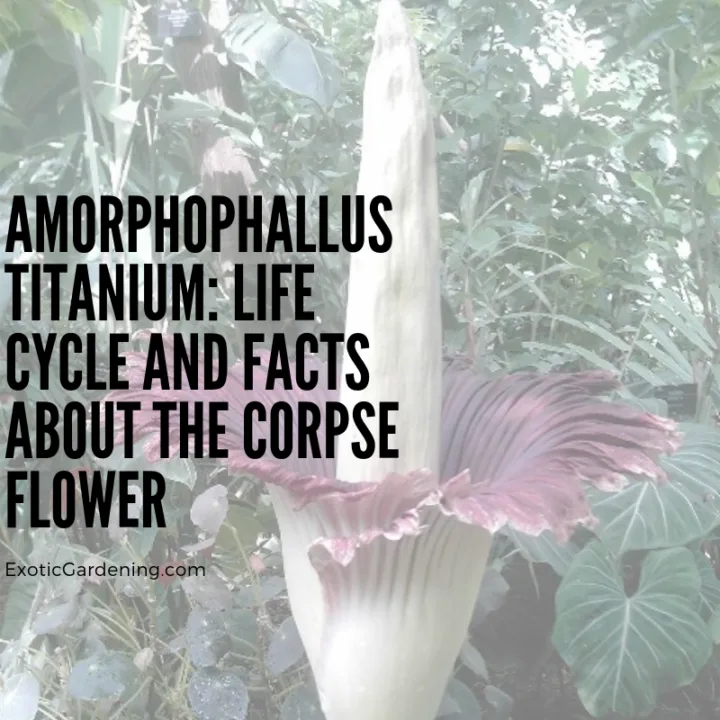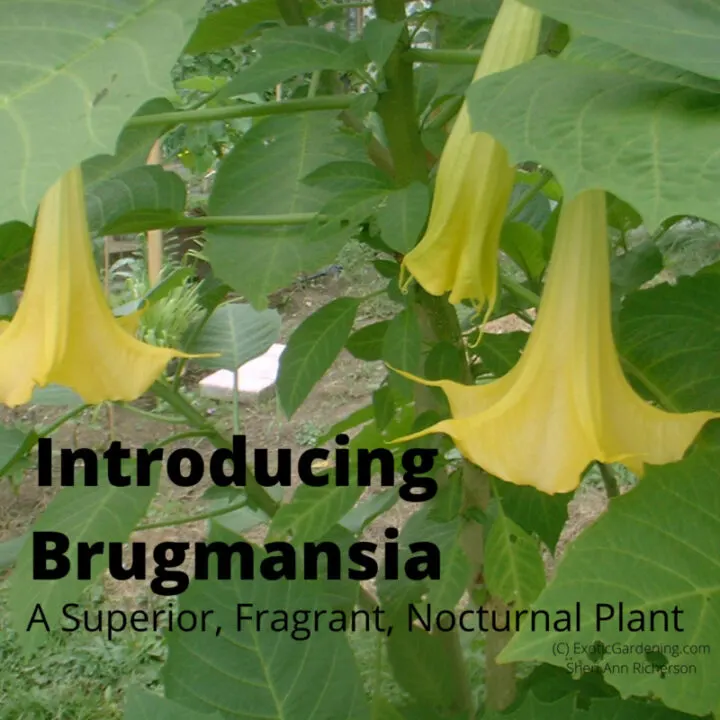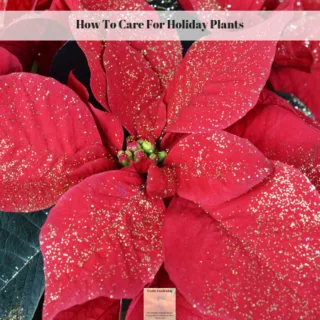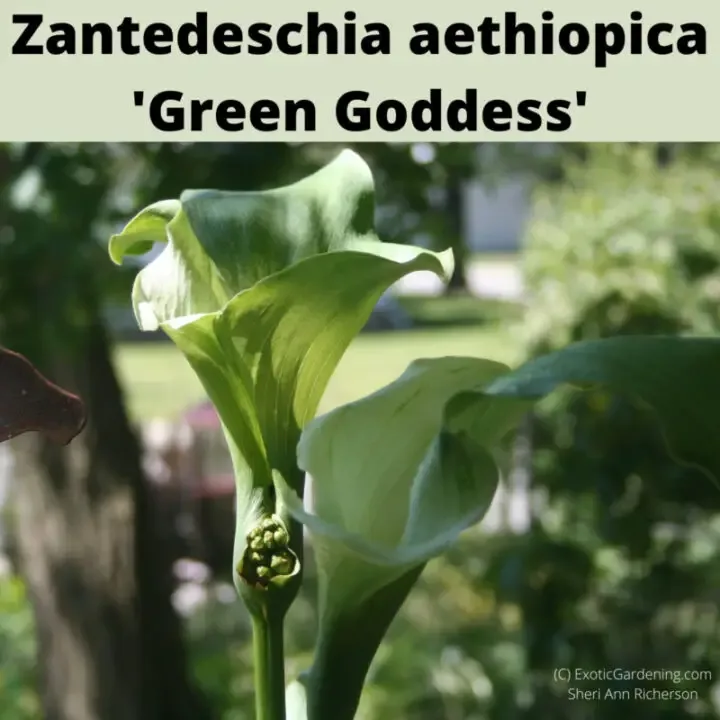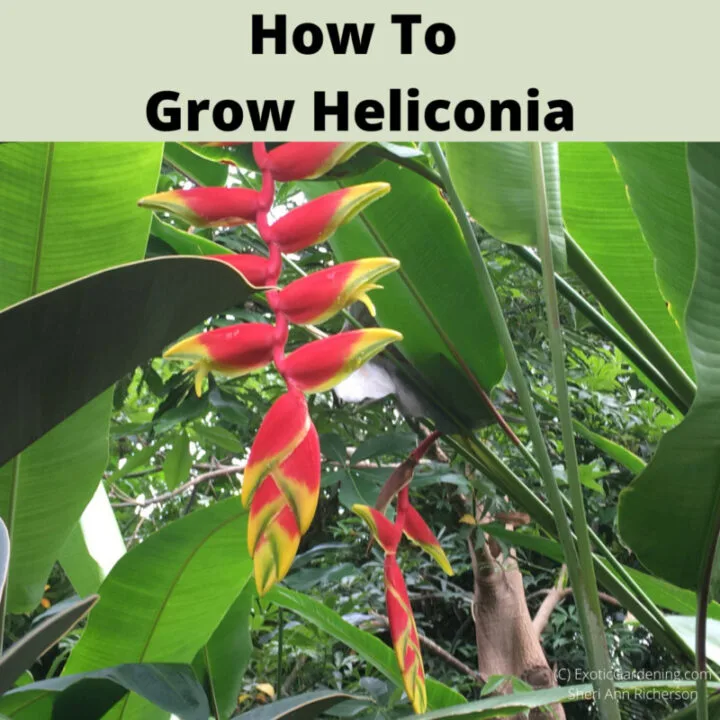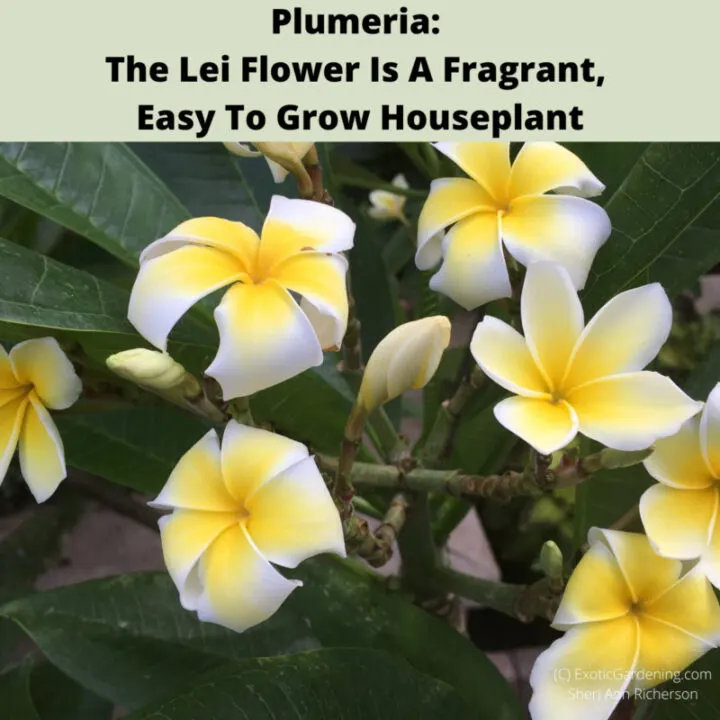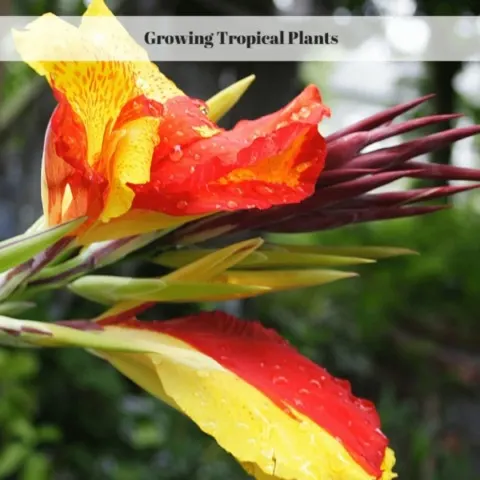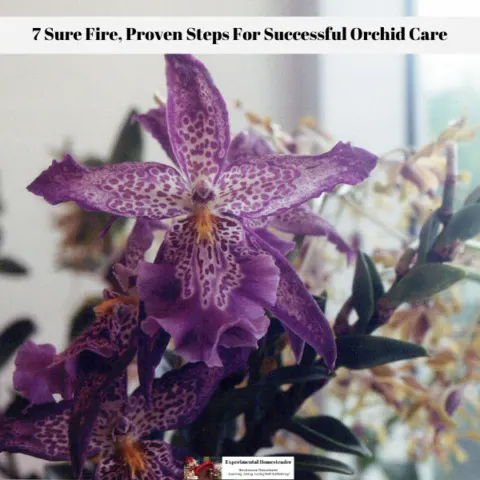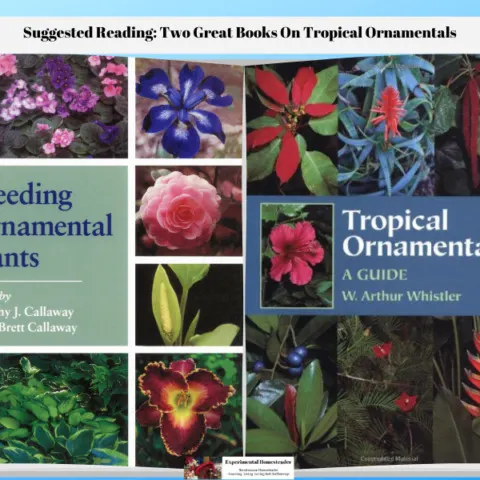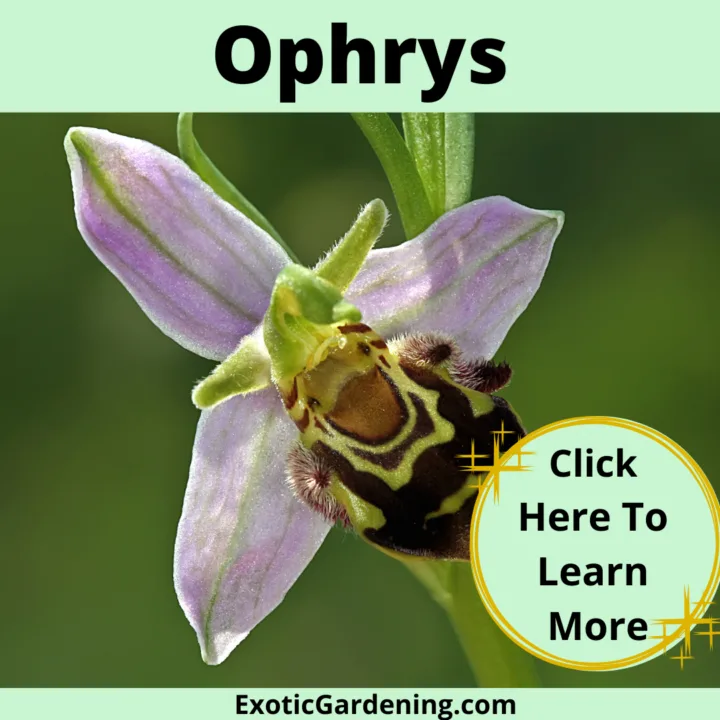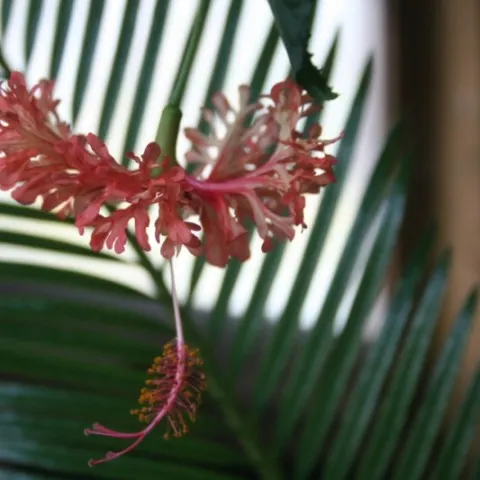Coral Vine, scientifically known as Antigonon leptopus, is a striking tropical climbing vine.
This captivating plant boasts rapid growth, charming coral-pink flowers, and a penchant for climbing arbors, trellises, and fences.
However, its beauty comes with a caveat – it's classified as an invasive species in various regions, including Florida, where it can disrupt local ecosystems.
Antigonon leptopus Origin and Habitat
Native to Mexico and Central America, Coral Vine thrives in tropical and subtropical climates.
You can find it adorning roadsides, coastal cliffs, and forests, often taking over with its vigorous growth.
In its native habitats, it can reach towering heights of up to 40 feet, weaving its way into tree canopies and spreading rapidly through the forest understory.
Remarkably, it's also capable of surviving in arid conditions.
The name Antigonon is derived from the Greek words "anti," meaning "in place of," and "polygonum," referring to a member of the Knotweed family.
This name aptly captures the Coral Vine's ability to replace other vegetation due to its aggressive growth habit.
Appearance and Growth Habits
- Leaves: Coral Vine's leaves are pale green and somewhat arrow-shaped, providing an appealing backdrop to its vibrant blooms.
- Flowers: Its striking coral-pink flower clusters, which can also appear in red or white depending on the cultivar, grace the vine from spring to fall.
- Growth Rate: This plant is a fast grower, capable of reaching 8-10 feet in a single season.
Invasiveness Of Coral Vine
Coral Vine's invasiveness is a topic of paramount importance, as it has caused significant concerns in various regions due to its aggressive growth tendencies.
Let's delve deeper into this issue:
Category II Invasive Exotic in Florida
In the sunshine state of Florida, Coral Vine is not just a pretty face; it's also classified as a Category II Invasive Exotic.
This designation highlights the severity of its impact on local ecosystems.
While its vibrant flowers may initially captivate gardeners, its unrelenting ability to spread beyond cultivation boundaries has raised alarms among conservationists and horticulturists alike.
A Global Aggressor
Coral Vine isn't content with just Florida; it has made a name for itself as one of the most aggressive weeds in tropical regions across the world.
Its unchecked proliferation in these areas poses a serious threat to the delicate balance of local ecosystems.
The vine's rapid takeover can disrupt native flora and fauna, altering the landscape in ways that are often irreversible.
Escaping Gardens and Encroaching Habitats
One of the most concerning aspects of Coral Vine's invasiveness is its uncanny knack for escaping the confines of gardens and venturing into natural habitats.
This tendency to encroach upon ecosystems where it doesn't belong can lead to a multitude of problems.
As Coral Vine spreads, it competes with native plant species for resources, potentially pushing them to the brink of extinction.
Furthermore, this aggressive growth can alter the composition of local wildlife, affecting the delicate web of life in these areas.
In conclusion, the invasive nature of Coral Vine is a cause for genuine ecological concern.
While its beauty is undeniably captivating, it's crucial for gardeners and conservationists to be aware of the potential consequences of its unchecked growth.
Responsible cultivation practices and consideration of native alternatives are essential steps in maintaining the harmony of both your garden and the broader environment.
Propagation and Pollination
Coral Vine is pollinated by bees and butterflies and produces copious amounts of seeds.
These seeds can be dispersed by birds and water, facilitating its spread.
Additionally, the plant can reproduce through stems, tubers, and plant fragments.
The seeds germinate readily as I found out when I began soaking fresh seed on December 4.
I planted the seeds several days later and they germinated on December 10.
Luckily I live in an area where this vine is not invasive, but due to the invasive nature of the vine, my suggestion is to avoid propagation and remove it from your landscape if you are growing it.
Cultural Conditions:
- Light: Coral Vine thrives in full sun but can tolerate partial shade.
- Soil Texture: It can adapt to various soil types, including clay, loam, and sand.
- Soil pH: This plant is adaptable to a wide range of soil pH levels, from acidic to alkaline.
- Soil Drainage: It prefers moist to occasionally wet soil conditions.
- Space Required: Coral Vine requires 3 to 6 feet of space to grow.
- USDA Plant Hardiness Zone: It's suitable for zones 8a, 8b, 9a, 9b, 10a, 10b, 11a, and 11b.
- Flower Color: Its captivating flowers can be pink, red/burgundy, or white, adding a pop of color to your garden.
Managing Coral Vine
Managing Coral Vine in your garden requires a delicate balancing act, appreciating its beauty while mitigating its invasive potential. Here's how you can cultivate this captivating climber responsibly:
1. Explore Native Alternatives: Instead of immediately opting for Coral Vine, take a moment to explore native alternatives that can bring a touch of charm to your garden without the invasive risks. Consider these options:
- Carolina Jasmine: A delightful native climber known for its fragrant yellow blooms, Carolina Jasmine adds a touch of elegance to your landscape.
- Coral Honeysuckle: With its vibrant red or orange tubular flowers, Coral Honeysuckle attracts pollinators and provides a burst of color.
2. Responsible Cultivation: If you're determined to cultivate Coral Vine, proceed with caution and follow these guidelines:
- Monitor Growth: Keep a watchful eye on your Coral Vine's growth. Regularly inspect your garden to ensure it doesn't venture beyond its designated area.
- Control Spread: Prune and trim your Coral Vine as needed to prevent it from encroaching on neighboring plants or natural habitats. Regular maintenance is key to curbing its expansion.
- Containment: Consider using physical barriers like root barriers or trellises to limit its spread. These measures can help keep the vine in check.
- Regular Removal: Remove any seedlings or new shoots that pop up in unintended areas promptly. Preventing their establishment can help curb the vine's invasive tendencies.
3. Regional Awareness: Understand the unique challenges of your local ecosystem. In regions where Coral Vine poses a particular threat to native flora and fauna, it's essential to exercise extra caution. Consult with local gardening experts or conservation organizations for guidance tailored to your area.
4. Educate Yourself: Stay informed about the invasive potential of Coral Vine and share your knowledge with fellow gardeners. Promote responsible gardening practices to reduce its impact on the environment.
5. Seek Guidance: Don't hesitate to seek advice from local horticultural experts or extension services. They can provide valuable insights into managing Coral Vine effectively while preserving your garden's harmony.
In conclusion, cultivating Coral Vine can be a rewarding endeavor, but it comes with responsibilities.
By considering native alternatives and practicing vigilant monitoring and control, you can enjoy the beauty of this vine while safeguarding your garden and the environment from its invasive tendencies.
Remember, responsible gardening is not just about what you plant; it's about how you nurture and care for your garden's diverse ecosystem.
Pests and Diseases: A Resilient Climber
Coral Vine, though captivating, is blessed with a remarkable resistance to pests and diseases, making it a robust addition to your garden.
However, like all plants, it's not entirely immune, and there are a few potential nuisances to be aware of:
1. Caterpillars: Among the limited list of Coral Vine's potential adversaries, caterpillars are the most common. These voracious eaters may occasionally find their way to the vine's foliage, nibbling on the leaves. While their presence may cause some cosmetic damage, it rarely poses a significant threat to the overall health of the plant.
2. Environmental Resilience: One of Coral Vine's strengths lies in its ability to withstand environmental stressors. It can endure varying soil conditions, adapt to different light levels, and bounce back from cold damage relatively quickly. This resilience adds to its allure for gardeners who appreciate a low-maintenance yet visually rewarding plant.
Cultivating Coral Vine Responsibly: Striking a Balance
In conclusion, Coral Vine undeniably boasts vibrant blooms and rapid growth, making it a tempting choice for garden enthusiasts.
However, to ensure that its allure doesn't transform into an environmental menace, it's crucial to approach its cultivation with caution and a strong sense of responsibility.
Be Mindful of Its Tendencies
Recognize that Coral Vine's exuberance can quickly turn it into an invasive force, particularly in certain regions.
Vigilance and regular maintenance are your allies in taming its growth and preventing its spread beyond your intended boundaries.
Consider Native Alternatives
While the beauty of Coral Vine is captivating, don't forget to explore native alternatives that can grace your garden without the invasive risks.
Native plants not only support local wildlife but also contribute to the overall health of your ecosystem.
In the world of gardening, responsible practices are vital.
It's not just about creating a stunning landscape; it's about preserving the delicate balance of your garden and the broader environment.
By heeding the lessons of responsible cultivation and choosing native alternatives, you can enjoy the Coral Vine's allure while ensuring that it remains a harmonious part of your natural surroundings.
FAQ: Antigonon leptopus - Your Questions Answered
Q: What is Antigonon leptopus?
A: Antigonon leptopus, also known as Coral Vine, is a tropical climbing plant celebrated for its vibrant flowers.
Q: Where is Coral Vine originally from?
A: Coral Vine is a native of Mexico and Central America.
Q: What colors do Coral Vine flowers come in?
A: Coral Vine typically produces coral-pink flowers, but you can also find variations in red or white.
Q: How quickly does Coral Vine grow?
A: Coral Vine boasts a rapid growth rate and can reach 8-10 feet in just one season.
Q: Is Coral Vine considered invasive?
A: Yes, Coral Vine is classified as invasive in several regions, including Florida, due to its aggressive growth.
Q: Are there alternative native plants to Coral Vine?
A: Absolutely! Consider native climbing vines like Carolina Jasmine, or Coral Honeysuckle.
Q: What are the ideal growth conditions for Coral Vine?
A: Coral Vine thrives in full sun to partial shade, adapts to various soil types, and prefers moist to occasionally wet soil.
Q: How can I responsibly manage Coral Vine in my garden?
A: Keep an eye on its growth, prune as needed to control its spread, and think about using physical barriers for containment.
Q: Does Coral Vine have resistance to pests and diseases?
A: To a large extent, yes. It's relatively resistant, with only caterpillars posing a potential issue.
Q: What can I do to prevent Coral Vine from becoming invasive?
A: Choose not to grow it, but if you must, be vigilant about monitoring and controlling its spread, especially in regions where it poses a threat.
Q: What ecological impact does Coral Vine's invasiveness have?
A: Coral Vine can disrupt local ecosystems by outcompeting native species and altering wildlife habitats.
Q: Is Coral Vine sensitive to cold weather?
A: Yes, it's cold-sensitive, but it can bounce back from cold damage.
Q: How does Coral Vine get pollinated?
A: Coral Vine relies on pollinators like bees and butterflies for the job.
Q: How does Coral Vine reproduce?
A: It reproduces through seeds, often dispersed by birds and water, as well as by stems, tubers, and plant fragments.
Q: Can I cultivate Coral Vine in USDA Zone 8?
A: Absolutely, but be aware that it will be deciduous in USDA Zone 8 due to colder temperatures.
Q: What's the significance of its scientific name, Antigonon leptopus?
A: The name Antigonon is rooted in Greek, meaning "in place of" and "member of the Knotweed family," reflecting its vigorous growth habit.
Q: Why should I consider native alternatives to Coral Vine?
A: Native alternatives support local ecosystems, reduce the risk of invasive plants, and maintain the natural balance of your garden.
Flowering Tropical Plants
How To Grow Tacca To Be A Successful Bloomer
The black flowers intrigued me, but the bat plant comes in many colors - brown, white and even green! Learn how to grow tacca from seed to bloom!
Amorphophallus Titanium: Life Cycle And Facts About The Corpse Flower
Learn about the life cycle of the Amorphophallus titanium as well as how to propagate it and some fun facts about this unique corpse flower.
Introducing Brugmansia: A Superior, Fragrant, Nocturnal Plant
Brugmansia trees are highly fragrant, night blooming plants with trumpet shaped flowers. Learn how to care for your brugmansia.
How To Care For Holiday Plants
Have you ever wondered how to care for holiday plants such as the Poinsettia or the Christmas Cactus? If so, then check out this holiday plant care guide
Zantedeschia aethiopica Green Goddess
Learn how easy it is to grow Zantedeschia althiopica Green Goddess from seed by using the damp paper towel method plus seed to bloom time.
How To Grow Heliconia
Learn how to grow Heliconia. Proper plant care is important to keeping your Heliconia healthy and thriving.
Plumeria: The Lei Flower Is A Fragrant, Easy To Grow Houseplant
Learn how to care for your Plumeria in ground and in containers. Because of the winter dormancy period it is ideal for summer containers.
Growing Tropical Plants
The key to successfully growing tropical plants is learning about them. Growing tropical plants is easy once you know their basic needs.
7 Sure Fire, Proven Steps For Successful Orchid Care
Successful orchid care is pretty easy once you understand the seven basic steps the plant needs to thrive in your home environment.
How To Grow Enormous Tropical Bulbs In Containers
Learn how to successfully grow tropical bulbs in containers. Regardless of where you live, there are reasons to grow in containers.
Easy Exotic Houseplants: Tropicals That Thrive Indoors in Containers
Tropical plants are the most beautiful, easy to grow indoor houseplants. Start growing exotic houseplants today that fruit and flower!
Suggested Reading: Two Great Books On Tropical Ornamentals
Learn about two books on tropical ornamentals. Breeding Ornamental Plants and Tropical Ornamentals are a must read for those who love plants.
How To Grow Beautiful, Delicate Tibouchina
Tibouchina are beautiful but delicate plants with gorgeous purple flowers and a velvet like foliage. They can be bushes or vines.
How To Grow Mallows
Learn how to grow mallows, a Malvaceae family which includes some of the most popular plants for the home garden, Hibiscus.
Ophrys
Ophrys are a rare group of terrestrial Orchids that grow in the wild and look like insects, especially bees, hence their common name.
Flowering Trees For Fragrance And Beauty
Flowering trees add beauty and fragrance to the garden. There are ones for tropical climates, cold climates and even indoor gardens.
Expert Advice On How To Grow Beautiful Allamandas
Allamandas come in a range of colors, are easy to grow and do well in containers. They also overwinter well indoors in cold climates.
Expert Advice On How To Grow Oleanders
Learn how to grow Oleanders as well as propagation methods. Learn about the toxicity of this plant as well.
Rafflesia Arnoldii
Rafflesia arnoldii produces the largest flower in the world yet this colorful, but strange plant is rare and grows on the rainforest floor.
Tropical Plants In Cold Climates: Overwinter Tropical Plants Or Start Over Each Year From Seed
Tropical plants grown in cold climates look great during the summer outside but many make great houseplants in the winter.
Celebrate Halloween With Night Blooming Plants
A cool way to decorate and celebrate Halloween is with night blooming plants! Create a spooky garden that glows in the dark this year!
How To Grow Tropical Plants
Growing tropical plants - also known as houseplants - indoors is fun and enjoyable plus many of them clean the indoor of pollutants.
It is easy to grow exotic looking plants that produce tropical fruit and colorful flowers in a pot in your living room or office.
Many of these plants are easy to start from seed and I share with you five plants that I recommend for indoor growing.
I also share with you why growing your own tropical fruit saves money.
In this video you will learn:
How to bring tropical plants indoors at the end of summer
How to grow tropical plants indoors
How to protect and overwinter tropical plants outdoors in cold climates
How to propagate tropical plants
How to water tropcial plants
How to grow topical plants in a greenhouse

